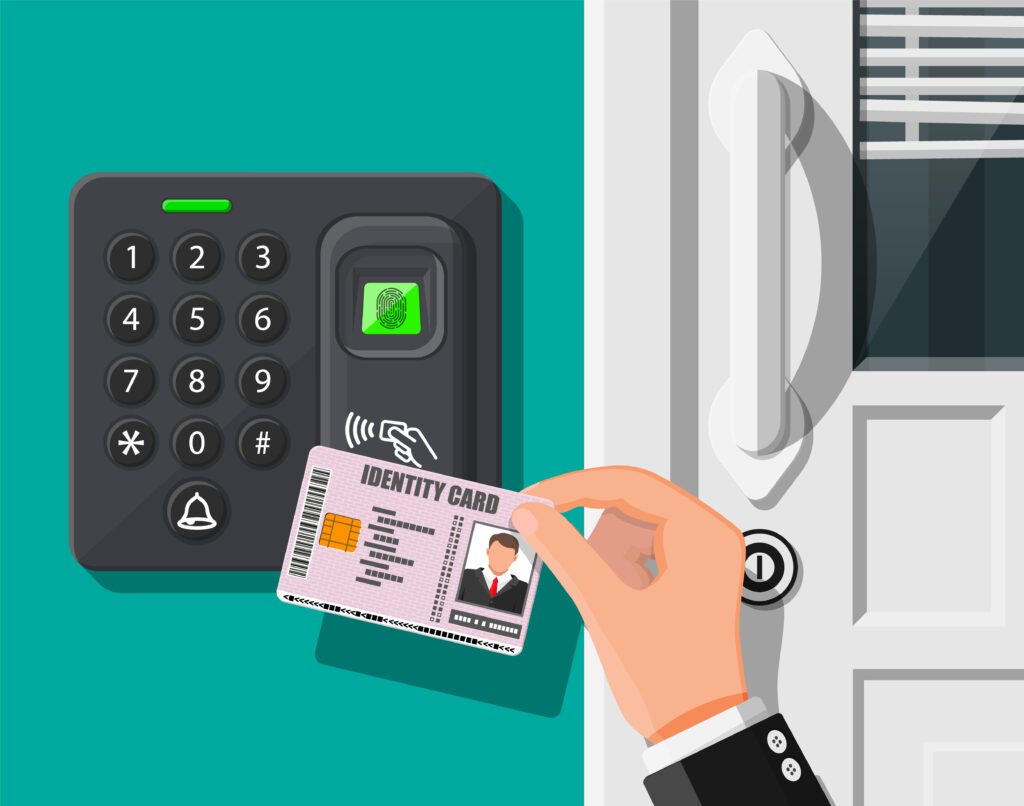
Access control
When conducting access control training, it’s essential to cover a variety of important topics to ensure that access control systems are effectively implemented and managed within an organization. Here is an outline of key content that can be included in an Access Control Training session:
Introduction to Access Control Systems:
Definition of access control and its importance in security.
Overview of different types of access control systems (e.g., physical access control, logical access control).
Explanation of access control components (e.g., readers, credentials, controllers, software).
Access Control Principles and Concepts:
Authentication, authorization, and accountability (AAA) principles.
Role-based access control (RBAC) and least privilege principles.
Understanding access control models (discretionary, mandatory, role-based, attribute-based).
Types of Access Control Systems:
Standalone access control systems.
Networked access control systems.
Cloud-based access control systems.
Biometric access control systems.
Mobile access control systems.
Access Control Technologies:
Proximity card readers.
Smart card readers.
Biometric readers (fingerprint, iris, facial recognition).
Keyless entry systems.
RFID technology.
Access Control Implementation:
Planning access control system deployment.
Site survey and risk assessment.
System design and integration.
Installation and configuration of access control components.
Access Control Administration:
User management and credential issuance.
Access control policies and procedures.
Access control database management.
Monitoring and auditing access control events.
Access Control Security Best Practices:
Secure credential management.
Multi-factor authentication.
Physical security of access control components.
Regular system updates and patches.
Integration with Other Systems:
Integration with video surveillance systems.
Integration with alarm systems.
Integration with visitor management systems.
Integration with identity management systems.
Compliance and Regulations:
Compliance with data protection laws (e.g., GDPR).
Industry-specific regulations (e.g., PCI DSS for payment card data).
Regulatory requirements for access control systems.
Incident Response and Troubleshooting:
Responding to access control system breaches.
Incident reporting and investigation.
Troubleshooting common access control system issues.
Training and Awareness for Users:
Educating users on access control best practices.
Training users on how to use access control systems.
Reporting suspicious activities or security incidents.
Case Studies and Real-World Examples:
Reviewing successful access control implementations.
Analyzing access control failures and security breaches.
Discussing lessons learned and best practices.
Q&A Session:
Providing participants with an opportunity to ask questions and seek clarification on any aspects of the training content.
By covering these topics in an Access Control Training session, participants will gain a comprehensive understanding of access control systems, principles, technologies, implementation best practices, and security considerations. This knowledge will enable them to effectively manage access control systems within their organizations and enhance overall security measures.
Training benefits
Training in access control offers a wide range of benefits to organizations, security professionals, and employees involved in managing access to facilities, systems, and data. Some of the key benefits of providing training in access control include:
Enhanced Security Awareness: Training helps employees understand the importance of access control in maintaining a secure environment. It educates them about the risks of unauthorized access and the role they play in safeguarding sensitive information and assets.
Improved Compliance: Access control training ensures that employees are aware of regulatory requirements and industry standards related to access control. This knowledge helps organizations maintain compliance with data protection laws, privacy regulations, and other relevant mandates.
Reduced Security Risks: Properly trained staff can identify security vulnerabilities, mitigate risks, and prevent unauthorized access to facilities, systems, and data. Training empowers employees to follow best practices in access control and contribute to a safer work environment.
Effective System Management: Training equips security personnel with the skills needed to effectively manage access control systems, including user provisioning, credential management, system configuration, and monitoring access events. This leads to efficient system operation and better incident response.
Optimized Resource Allocation: Well-trained staff can optimize access control systems to meet organizational needs while minimizing administrative overhead and operational costs. This results in efficient resource allocation and improved return on investment.
Enhanced User Experience: Training helps employees understand how to use access control systems properly, reducing errors and improving user experience. This leads to smoother access processes, increased productivity, and better overall user satisfaction.
Quick Response to Security Incidents: Training prepares staff to respond quickly and effectively to security incidents related to access control, such as unauthorized access attempts or system breaches. This proactive approach can help minimize the impact of security incidents and prevent further damage.
Integration with Security Ecosystem: Training enables security professionals to understand how access control systems integrate with other security technologies, such as video surveillance, alarm systems, and identity management platforms. This holistic view enhances overall security posture and incident response capabilities.
Continuous Improvement: Access control training fosters a culture of continuous improvement within the organization by encouraging ongoing learning and skill development. Employees can stay up-to-date with the latest access control technologies, best practices, and security trends.
Risk Mitigation: By training employees on access control best practices and security protocols, organizations can proactively mitigate security risks and prevent potential threats. This proactive approach helps safeguard assets, information, and people from unauthorized access and security breaches.
Overall, training in access control offers numerous benefits that contribute to a more secure, compliant, and efficient organization. By investing in access control training, organizations can empower their employees with the knowledge and skills needed to effectively manage access control systems and enhance overall security measures.
